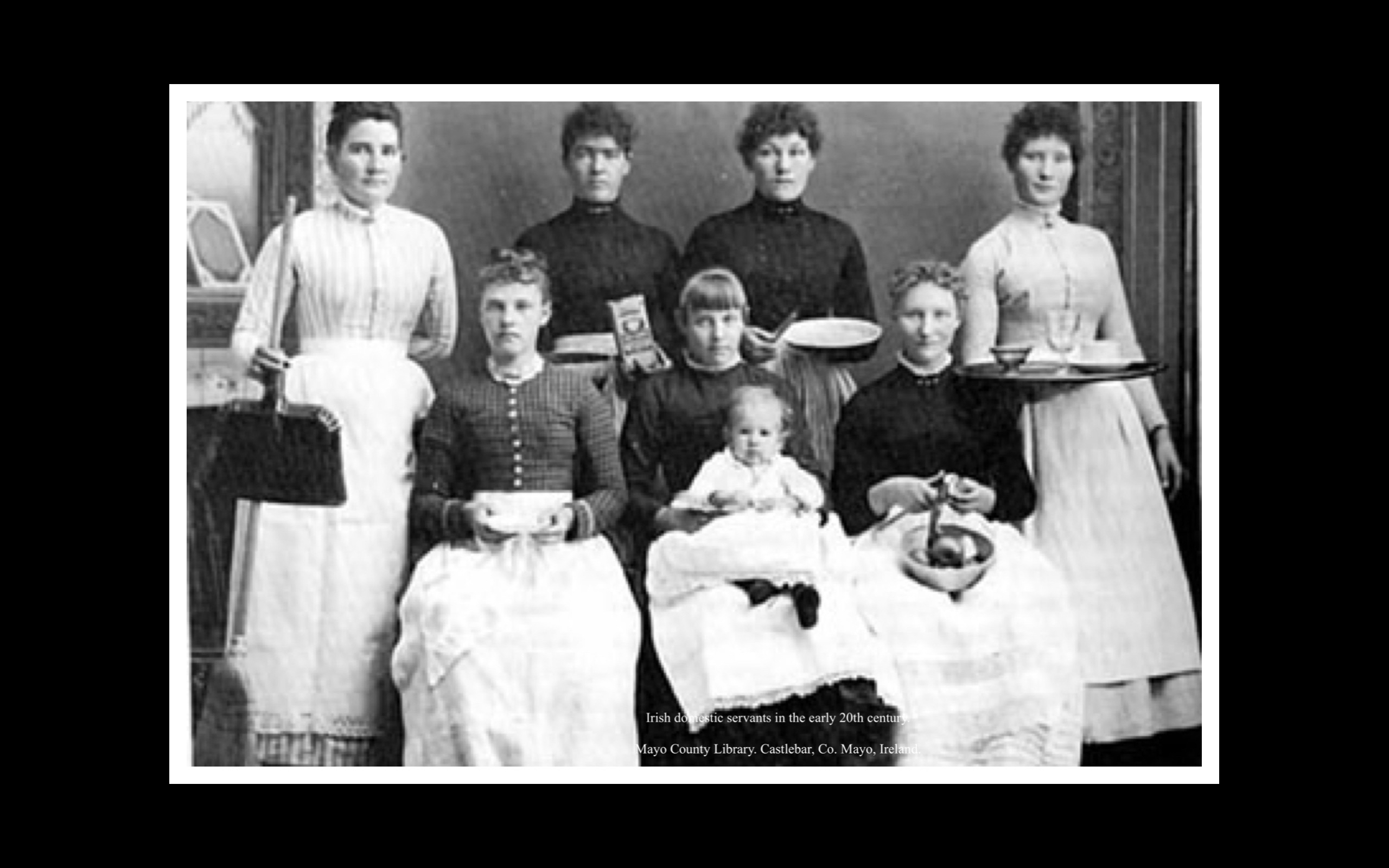Having just passed the anniversary of a woman’s right to vote, it made me stop and once again contemplate what was available to women as far as work when many of our ancestors were coming to this country. What did my female ancestors who came here for a new life do for work? Especially if they came without their family or a husband. Did you know Irish women were some of the only women to come without their family units? They also were as numerous as the Irish men coming but the women’s average age was 21 (Schlott-Gibeaux, 2020). After doing some research it seems as if domestic help was one of the most common jobs. While we may not think of this job by today's standards as good work, what was it like back then?
Skill or profession meant escape
For many young girls in Ireland having a skill or profession was the means for them to escape the social class that they were born into. Being able to go to America to earn money and leave Ireland was a way for them to create a meaningful life as well as gain some independence. For many it also was a way to help their families they left behind. If you look at ship manifests many put that they were a ‘servant’ or ‘domestic’ though many had never actually had that job before hand. It looked better that they had a skill. However, there were some girls who were lucky enough to live in a parish where the big house hired for jobs, such as scullery maids, cooks, waiting maids, etc (IrelandXO, 2023). These jobs were highly coveted and therefore not easy to attain. Yet, for those with no actual experience going to America where there were plenty of service jobs made the most sense, because so many were entering the country and looking for domestic help.
Service work meant long hours and meager pay
Working in what we would now call the service industry was hard work. Many got paid little for long tedious hours. However, many of the jobs were not live-in so they could leave in the evenings and have their own lives. The most important aspect was these women could save money, and still send home money. With the money sent home she would help her family survive and over time send more of the family to America.
Obstacles included social stigma / prejudice
While the working conditions were hard, there also came with the influx of Irish servants a social stigma. Many worried about being overrun by the Irish Catholics and even some worried about the profession being degraded because of the number of Irish. A letter to The New York Times in 1895 even quoted a former lady’s maid saying they are “the dirtiest and grossly ignorant people” because she was worried how they were affecting the domestic jobs. Because of this, many worked hard to overcome the stigma. Therefore it is important to note that “while 60.5 percent of first generation Irish women worked in the domestic industry, only 18.9 percent of their daughters did” (Schlott-Gibeaux, 2020).
It was a hard life with great rewards
Life may have been hard in Ireland and was still hard in America, but at least the Irish women were able to support themselves and even their families back home. There may have been social stigmas but they worked to overcome them. The most important aspects to remember are these Irish women came for independence and work. They found both and because of their determination in just one generation their daughters already had an easier life.
Sourceshttps://www.irelandxo.com/ireland-xo/news/irish-serving-girls-housemaids
https://www.newyorkfamilyhistory.org/blog/bridgets-irish-domestic-servants-new-york
We can help
If you need any help finding your ancestors, just let us know.


